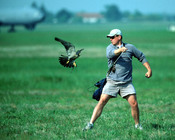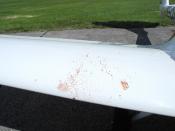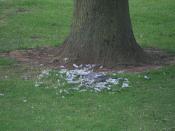1.Who has the right to fly? Bird or man? God has created the bird to fly in the sky, whereas man is not designed to fly. But man has conquered the sky and now sharing the sky with the bird. Therefore, we can say that it is our responsibility to avoid the collision with the bird and ensure the safe living of the bird species.
2.Recently the presence of birds around all the airports have been increased in a remarkable numbers, therefore, the aim of this article is to apprise all concerned regarding the bird hazards.
3. The bird-strike menace to aviation is universal. It has no respect for airspace boundaries, airport locations, phase of flight, aircraft type, season of the year or air crew experience. Yet solution to the problem can involve each of these factors. Reducing the hazard involves numerous factors in a constantly changing environment.
Aviation regulatory authorities, airport managers, flight operations and ground staffs and crew members can all make specific contributions by taking certain actions. When those efforts are coordinated, they can produce tangible safety improvements.ùWhy Bird Strikes Are Hazardous?4.Bird strikes affect aircraft of all levels of technological sophistication. The first plane brought down by a bird strike was a Wright Brothers-designed biplane flown by aviation pioneer Calbraith Perry Rodgers. A gull got jammed into the aircraft's controls, causing the accident. Rodgers, best known for completing the first transcontinental flight in 1911, died in crash near Long Beach, California, U.S.
Bird strikes damaged the leading edge of wing5. Bird strikes have caused major accidents that resulted in a high number of fatalities. Many more lives were lost in accidents involving fatalities. Bird-strikes are costly. They cause delays, unscheduled landings and non-routine inspections. In these days faster speeds, acceleration of jet aircraft,


